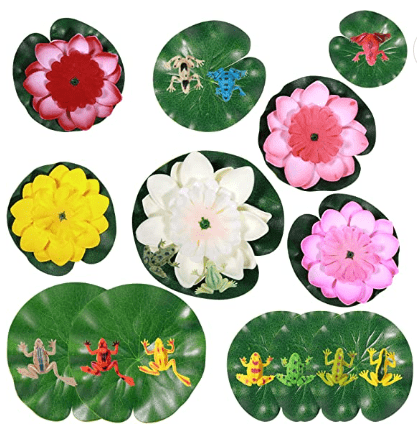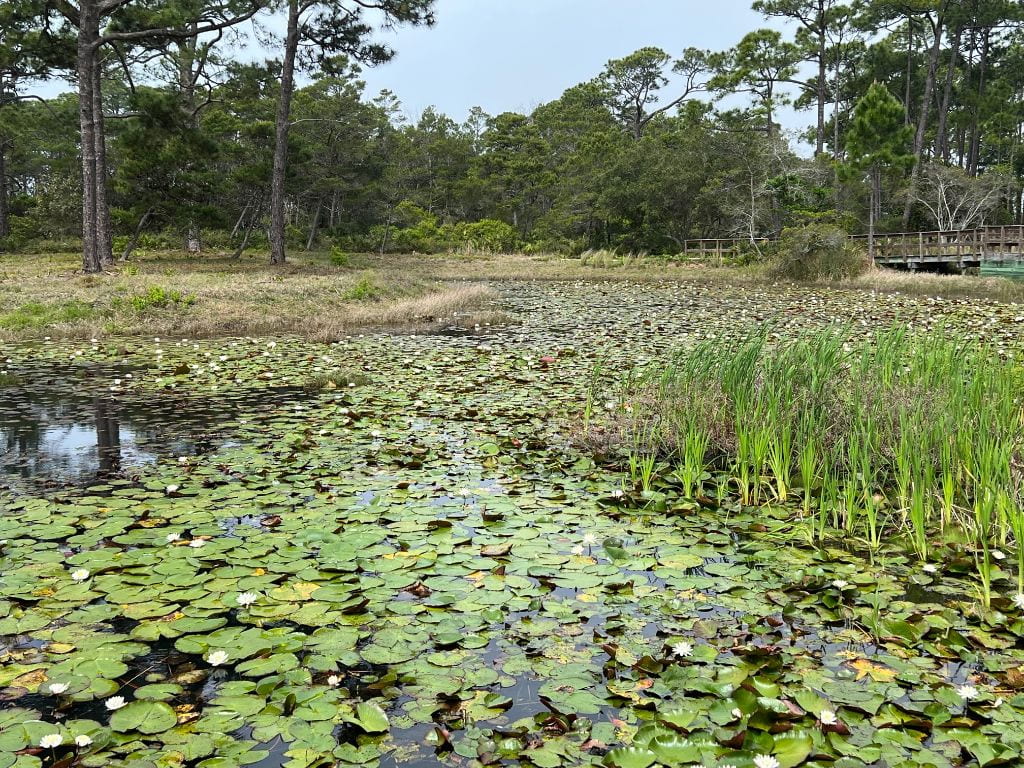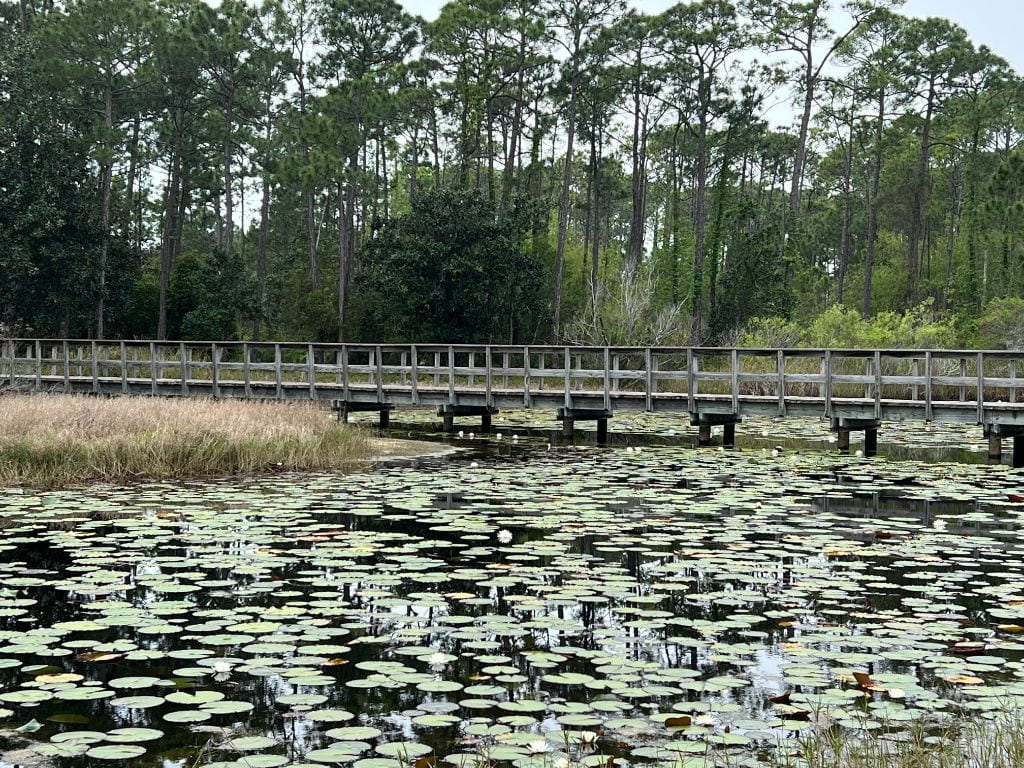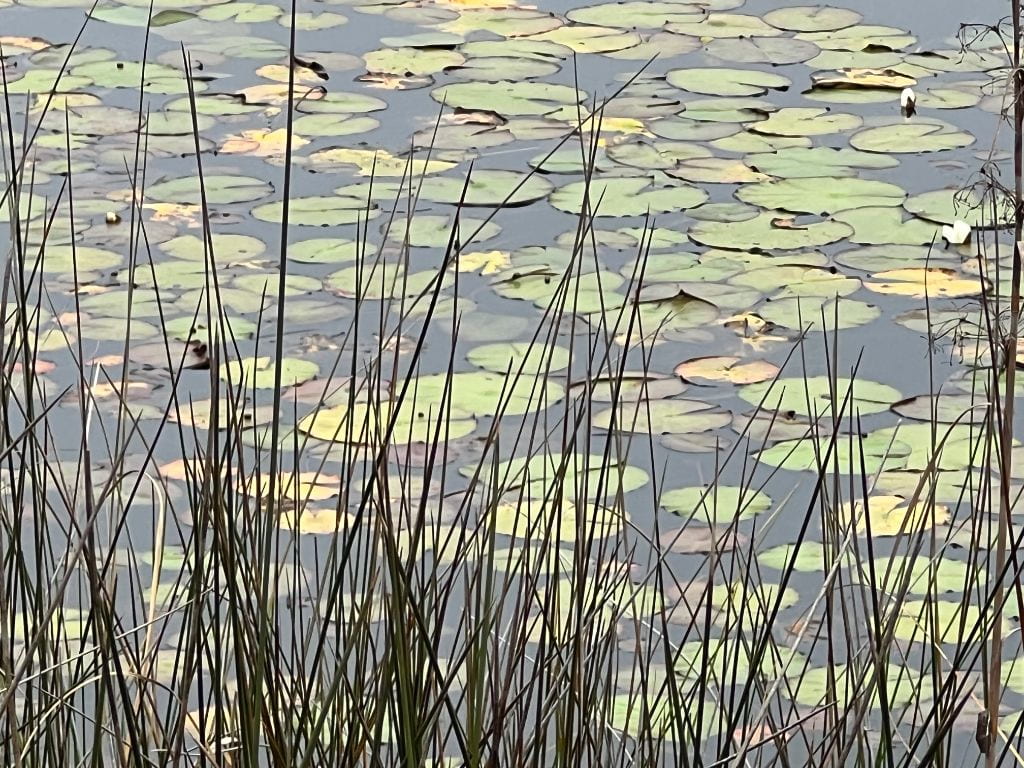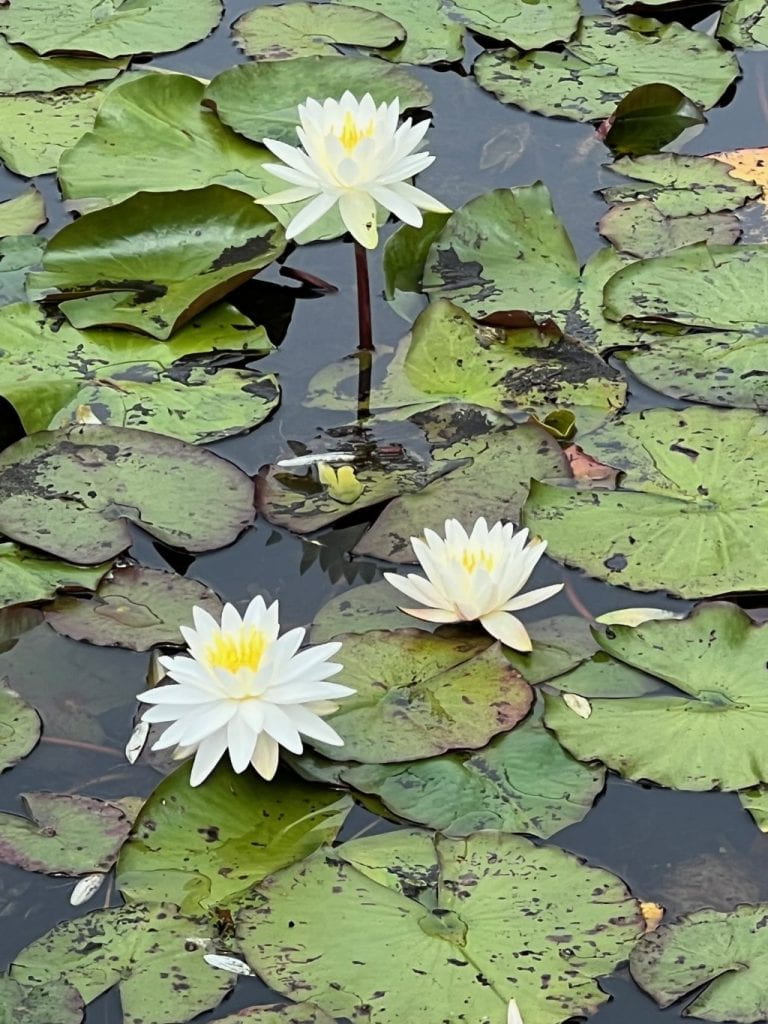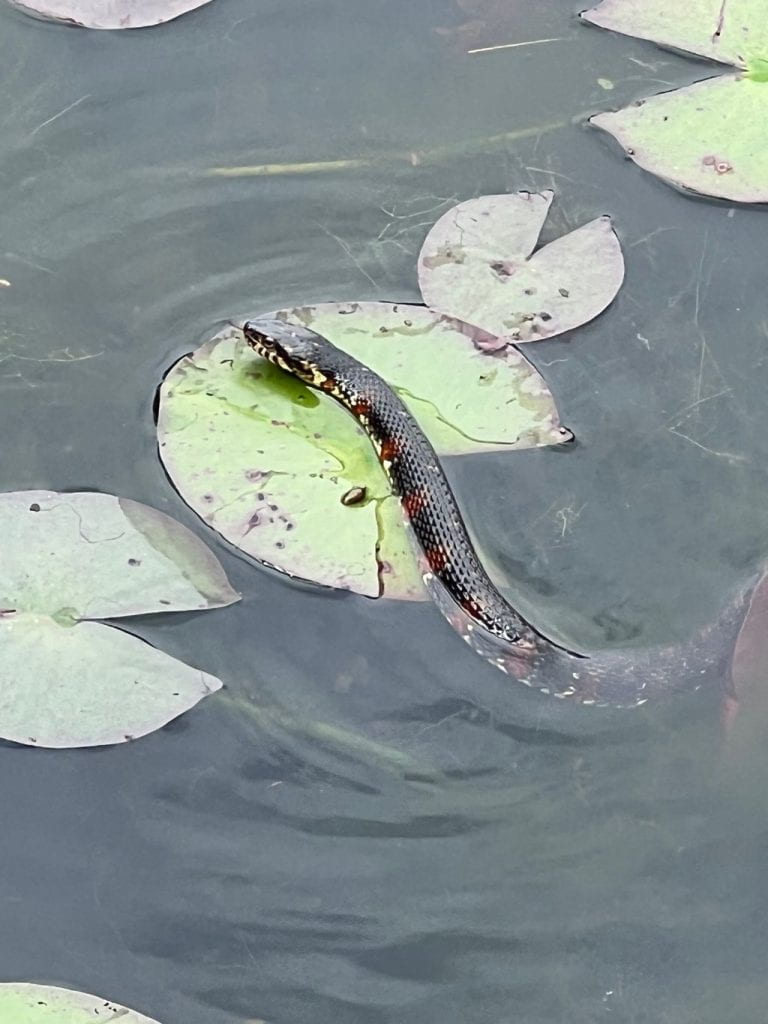A Study of Lily Ponds
If you are visiting a pond or studying pond life, be sure to include lily pads as part of your investigation. This aquatic plant thrives in full-sun and grows in still shallow water or at the edge of a deeper body of fresh water. I snapped these photos at Western Lake in Watercolor, Florida.
The rounded notched lily pad leaf has a waxy coating and repels water. Stomas, openings in the leaves, help the leaves float and exchange gases. Lily pads appear to be freely floating, but they are attached to a stem that extends down to where it is rooted at the bottom of a lake or pond. These perennials reproduce by producing root-like stems called rhizomes.
Many water lilies open from early morning to mid-afternoon, but others bloom at night. Blooms last three to five days.
Sometimes thought to be invasive, the leaves provide food and shelter for aquatic life and shade which lowers water temperature and reduces algae growth.
Seeing these animals, reminded me of The Little White Duck, a traditional children’s song.
Claude Monet, a French impressionist, is known for numerous large paintings of his lily ponds.
Another story to connect art, reading, and science:

The giant water lily can be found at the St. Louis Botanical Gardens.

I was surprised to discover water lilies in Montana!
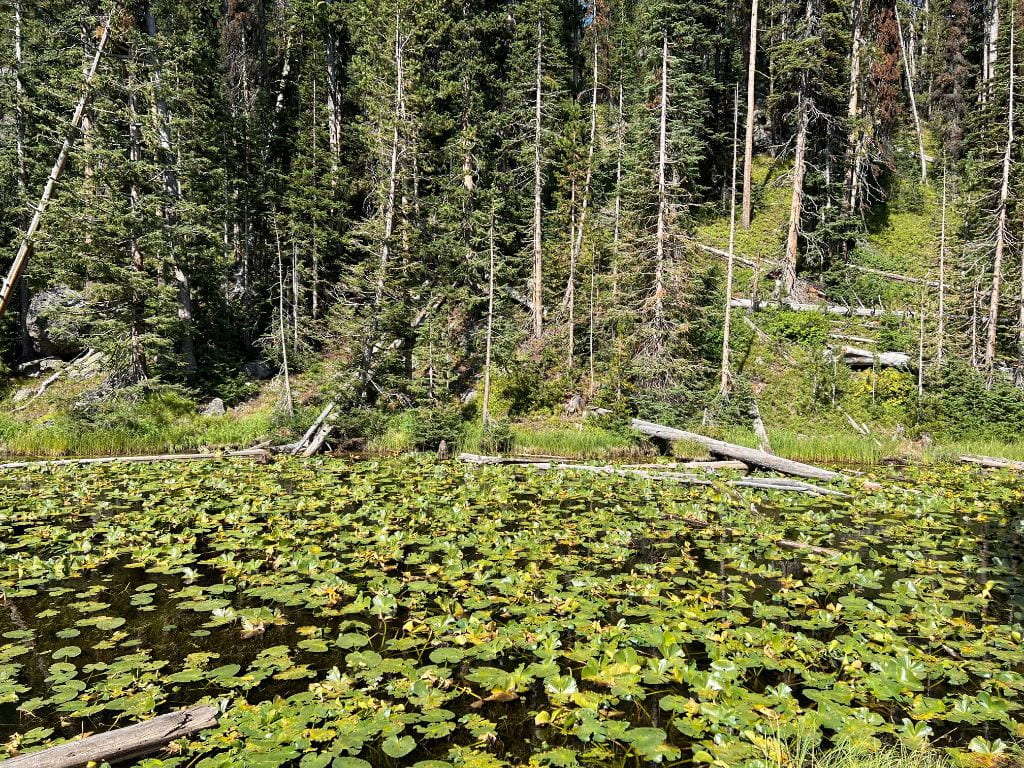
Add plastic lily pads and pond animals (such as these) to your child’s pool, bathtub or in a water table for hours of fun!
